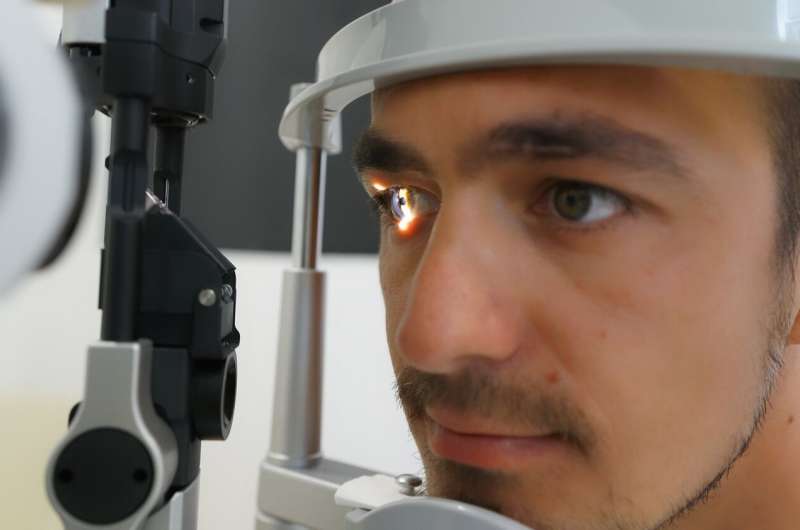This article has been reviewed according to Science X's editorial process and policies. Editors have highlighted the following attributes while ensuring the content's credibility:
fact-checked
proofread
OCT scans in optometry could boost glaucoma detection

Optometry clinics that routinely used optical coherence tomography (OCT) scanners as part of their regular eye tests were 34% more likely to refer patients for a specialist glaucoma assessment, according to new research that examined the results of almost 1 million people.
The research, published in the Journal of Glaucoma, found that routinely including OCT scans in optometry eye tests could boost glaucoma detection rates and reduce the high rate of undiagnosed glaucoma cases in the community.
The research, was conducted by a team from CERA, including Honorary Principal Investigator for Health Services Research Peter Larsen, and staff from the optometry chain Specsavers. Larsen began his research role at CERA after stepping down from his previous executive role as Group Eye Director at Specsavers.
The research compared specialist glaucoma referrals from those practices which routinely used OCT scanners in their eye examinations to those who did not.
It is believed to be the first large-scale investigation of the impact of routine OCT scanning on glaucoma detection rates.
Glaucoma and OCT
Glaucoma damages the cells of the retina and optic nerve, which send signals from the eye to the brain. About 70 million people worldwide—including 300,000 Australians— have glaucoma, but it is estimated that at least half of the people living with the disease don't know they have it.
"Diagnosing glaucoma is challenging due to the insidious nature of the disease which has few symptoms in its early stages,"' Peter Larsen said.
"This is compounded by the fact that elevated eye pressure—a key risk factor for the disease—is not present in many people, including most of those with undiagnosed glaucoma."'
OCT is a powerful imaging technique that enables eye care professionals to view a patient's optic nerve and retina with great precision. It is widely used by ophthalmologists who treat people with glaucoma and increasingly common among optometrists.
Larsen said the study results show that routinely including OCT in optometry eye testing—rather than using it as an "on-indication" test when other signs of the disease are present—could significantly reduce the burden of undiagnosed glaucoma in the community.
"Conventional approaches to glaucoma detection in optometry were formulated before the widespread availability of OCT,"' he said. "This study shows that routine adoption by optometrists could ultimately lead to earlier treatment and better visual outcomes."
Analyzing eye data
Larsen's research examined the de-identified records of almost 994,000 patients who visited 195 Specsavers practices in 2019.
The study found 10,475, or 1.1%, of patients who had an eye test were referred to an ophthalmologists for a glaucoma assessment.
It also found that:
- Practices which incorporated an OCT test in routine eye testing were more likely to refer patients to an ophthalmologist for a glaucoma assessment (9,719 patients or 1.1%) compared to those that did not (756 patients or 0.8%)
- The proportion of patients referred by practices that routinely used OCT was similar to the estimated prevalence of glaucoma in the Australian population (1.4%–1.6% of all patients and 2%–3% of patients over 50%)
- More than two thirds of patients referred (68%) had normal intra-ocular pressure in both eyes, meaning that they might have been missed if eye pressure was used as the basis for referral.
The study also received ophthalmologist feedback for 318 of the referred patients. Of these:
- 129 (41%) were diagnosed with glaucoma,
- 121 (38%) were considered to be glaucoma suspects, and
- 68 (21%) showed no signs of glaucoma.
While the rates of those who were shown not to have glaucoma were lower than some previous studies on glaucoma referrals from optometry, Larsen said more research was needed to determine the false positive rate.
More information: Joseph P. Paul et al, Increased Glaucoma Case-finding Through Routine Optical Coherence Tomography in Optometry Practice, Journal of Glaucoma (2023). DOI: 10.1097/IJG.0000000000002339




















